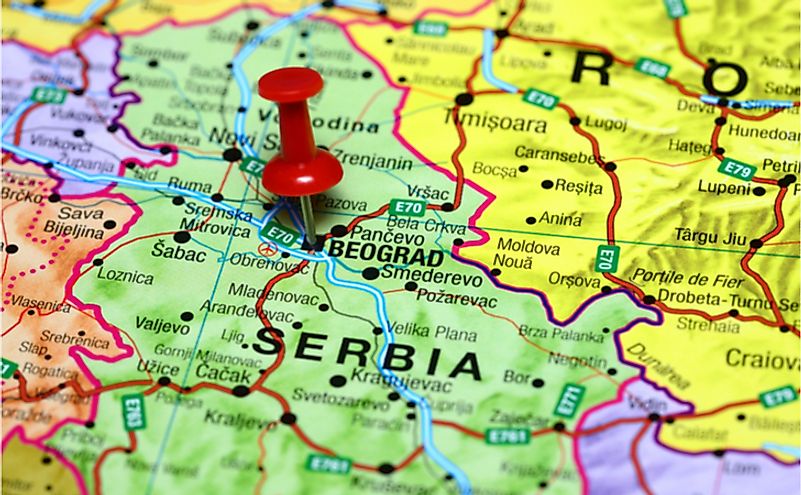What Continent Is Serbia Located In?

Serbia is an independent state that has an estimated population of 7 million people and a population density of approximately 230.5 individuals per sq mi. The country is bordered by Montenegro, Bosnia and Herzegovina, Croatia, North Macedonia, Bulgaria, Romania, and Hungary, as well as a claimed border with Albania through the disputed territory of Kosovo. Serbia occupies an area of 34,116 sq mi, ranking as the 111th most extensive country in the world. However, if Kosovo is excluded, it has an area of 29,913 sq mi, ranking as the 117th most extensive. The highest peak in the country, Midzhur, has an elevation of 7,116 ft and is located in the Balkan Mountains, while the lowest point is at the village of Prahovo, which is near the Danube River.
Location in Europe
Serbia is located in Europe, at the crossroads of Southeast and Central Europe. It is situated in the southern part of the Pannonian Basin and the central Balkans. Serbia, including Kosovo, is the 22nd largest European state. Belgrade, which is Serbia's capital, is one of the largest and longest continuously inhabited cities in Southeastern Europe.
Europe is the world's sixth largest continent, occupying an area of about 3,930,000 sq mi or 6.8% of the world’s total land area. Europe is composed of 50 sovereign states, the largest of which is Russia. In 2016, the continent had an estimated population of 741,447,158 and a population density of approximately 188 individuals per square mile.
Politics and Governance
Serbia is governed as a unitary parliamentary constitutional republic, and its government contains three branches: executive, legislative, and judicial. The country adopted its current constitution in 2006, after the Montenegro independence referendum. Serbia's president can serve for a maximum of two 5-year terms. The President of Serbia is the head of state, commander-in-chief of the armed forces, influences foreign policies, and suggest a prime minister, who is then appointed by the National Assembly. The government, which is made up of cabinet ministers and the prime minister, is responsible for proposing budgets and legislation, as well as guiding international and foreign policies and executing the law. Serbia’s National Assembly is composed of 250 elected members who serve 4-year terms. The National Assembly can approve the budget, enact laws, declare wars, select and dismiss cabinet ministers and the prime minister, and schedule presidential elections.
Economy of Serbia
According to the International Monetary Fund (IMF), Serbia had a nominal GDP of $50.651 billion in 2018. The country’s economy is dominated by the service sector, which accounts for over 67.9% of its GDP. Serbia’s currency is the Serbian dinar, and the Belgrade Stock Exchange is the country's only stock exchange. Approximately 56% of Serbian workforce is employed in the service sector, while 28.1% and 15.9% are employed in the industrial and agricultural sectors, respectively. The average monthly net salary in Serbia was about $525 as of May 2019, and the country had an unemployment rate of 12.7% in 2018. After experiencing nearly 10 years of strong economic growth, with an average growth rate of 4.45% per annum, the country entered a recession in 2009. Serbia’s economy experienced negative growth rates of -3% in 2009 and -1.8% in 2014.











